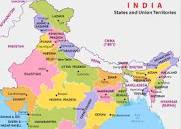
Chinese Shenanigans on Arunachal Pradesh.
(The Hindu-pg 6) (GS 2)
Chinese Shenanigans on Arunachal Pradesh.
-
For the third time in recent years, China’s Ministry of Civil Affairs, on April 2, made a provocative move by releasing new names for 11 places in Arunachal Pradesh under the fig leaf of standardising geographical names in “Zangnan” (a phoney term invented by Beijing to claim that Arunachal Pradesh is “South Tibet”). According to media reports, these names include “two residential areas, five mountain peaks, two rivers, and two other areas”.
-
In 2017, China had ‘renamed’ six places that lie in Arunachal Pradesh. It had also ‘standardised’ the names of 15 places in 2021, which had similarly included population centres, mountains, rivers, and a mountain pass.
-
China’s bogus claim, Indian history China’s claim on Arunachal Pradesh is as bogus as can be. A reading of Tibet And Its History by Hugh Edward Richardson clearly suggests that the Qing presence in Tibet began to emerge around 1720, after Chinese intervention in the internecine succession struggle following the death of the Sixth Dalai Lama (16831706). Therefore, there is absolutely no basis to the Chinese claim over Tawang, or for that matter any other part of Arunachal Pradesh, on the flimsy grounds that it is the birthplace of the Sixth Dalai Lama. China, in any case, had no locus standi in Tibet at the time. But that has not prevented China from concocting so called historical claims with retrospective effect. A study of the 1960 reports of the officials of the two sides on the boundary question reveals the vague, patchy and superficial nature of “evidence” proffered by the Chinese side in support of Beijing’s boundary claims.
